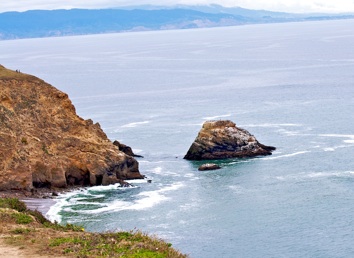Chapter 21
Ocean and Coastal Systems

Chimney Rock, Point Reyes, CA
Source: Michael Ritter
The oceans have a significant impact on the Earth system. Ocean water
serves as a reservoir of heat, the source of energy to fuel hurricanes,
and constantly sculpts the edges of the continents. Coasts
are an interface between the lithosphere and hydrosphere. The erosional
and depositional work of ocean water creates spectacular landscapes
and habitats for flora and fauna. In this
chapter you will investigate the physical properties of oceans and their
impact on the physical geography of Earth.
Learning Outcomes
By the end of this chapter you should be able to:
- Describe the characteristic of water waves and how they travel.
- Explain how tides form.
- Identify characteristic coastal landforms created by erosion and deposition.
- Describe the characteristics of and explain how various coasts are formed.
- Compare and contrast the various types of reefs.
You may view a list of chapter topics by clicking the
"Topic outline" link or go directly to the first topic by
clicking "Continue".
Previous |Topic
Outline | Continue
|